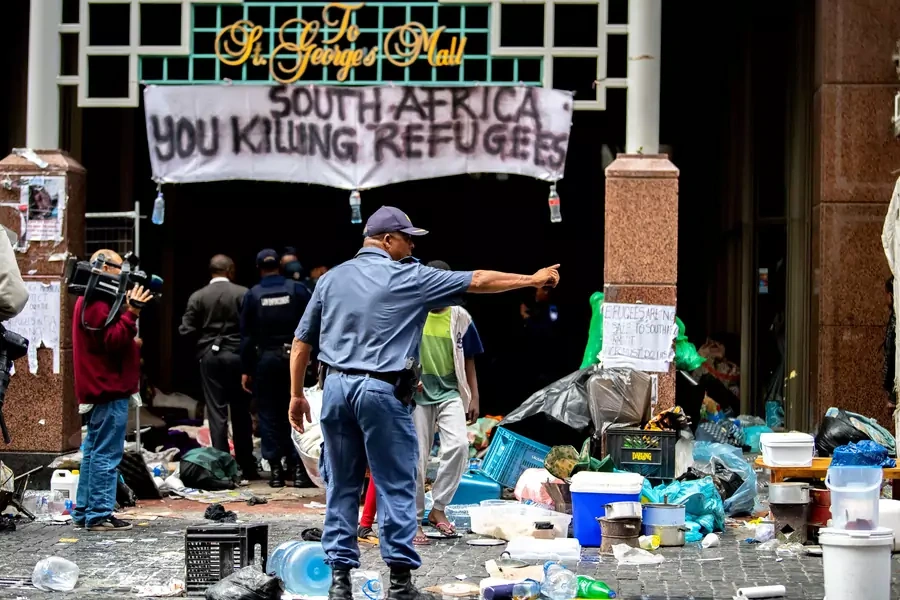Protest Camp Outside UNHCR in South Africa Removed by Police

The South African Police Service (SAPS) has ended a sit-in at the UN High Commissioner for Refugees (UNHCR) compound in the capital, Pretoria. Some two hundred people have been arrested, according to the media, and others are being held to determine their immigration status. The sit-in had lasted for a month with up to seventy participants, identified by the media as refugees and asylum seekers. The protestors were demanding that the UNHCR resettle them in other countries because of their fear of xenophobic violence centered in South Africa’s townships.
The episode has been highly problematic. The protestors were demanding what the UNHCR could not do. Under international law, the UNHCR has a role with respect to persons outside their own country because of a well-founded fear of persecution based on religion, ethnicity, political views, or membership in a particular social group. While media reports are unclear, it is highly unlikely that most of the protestors had gone through the South African adjudication process to qualify for asylum or refugee status. In South Africa as in the United States, adjudication of refugee or asylum claims is a lengthy process. It is likely that most of the protestors were economic migrants. The UNHCR has no remit for those who go to another country seeking economic betterment.
More on:
South Africa has by far the most advanced economy on the continent. As such, it is a magnet for immigrants, documented and undocumented. Borders are highly porous; the largest number of foreigners in South Africa appear to be from close neighbors, especially Zimbabwe and Mozambique. This population, usually very poor, ebbs and flows depending on conditions in the home country. There are also higher-profile migrants from countries further afield, such as Congo and Nigeria. Wealthier, they attract sensationalized media attention. Nigerians, for example, are frequently identified as drug dealers.
As is nearly always the case, the clearing of a sit-in is a public relations disaster for the police. In racially-charged South Africa, there are international media shots of a white policeman pepper-spraying a black mother and her child, though, according to the New York Times, the SAPS racial make-up mirrors that of the population, which is 80 percent black.
Stepping back, South Africa is dealing with what is likely to become more common: the unregulated movement of people from poor areas and countries to wealthier ones. Like most countries, South Africa does not have in place a solution to this new challenge. As elsewhere in Africa, borders are porous and fundamentally artificial—they were drawn by colonial governments without reference by and large to the indigenous peoples. For example, the Tswana people are to be found on both sides of the Zimbabwe-South Africa border.
More on:
 Online Store
Online Store